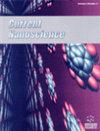Advancing Hybrid Nanocatalyst Research: A Python-based Visualization of Similarity Analysis for Interdisciplinary and Sustainable Development
IF 1.5
4区 材料科学
Q4 BIOTECHNOLOGY & APPLIED MICROBIOLOGY
引用次数: 0
Abstract
Background: This study presents a comprehensive analysis of hybrid nanocatalysts, which amalgamate attributes of both heterogeneous and homogeneous catalysts. Aim: To achieve a holistic understanding of the topic, we embarked on a meticulous exploration across multiple databases. Method: The Web of Science repository yielded 239 pertinent documents, while the Scopus database offered a more exhaustive collection of 1,887 documents. Although Google Scholar suggested a staggering 25,000 articles, its unclear selection criteria raised questions about the precision and dependability of its data. Hence, our study primarily relied on the Scopus database to ensure an extensive sample and analytical rigor. Using the Python-boosted visualization of Similarities methodology, we illuminated interconnections among various terminologies, identifying burgeoning areas within hybrid nanocatalyst research. Result: Our findings emphasized the ascending trajectory toward innovating materials with superior properties in hybrid nanocatalysis. This trajectory accentuated the pivotal role of interdisciplinary collaboration and sustainable methodologies. Advanced analytical techniques, notably X-ray diffraction, emerged as quintessential in delineating the nuanced relationship between hybrid nanocatalysts' structural and functional attributes. We also spotlighted Energy-Dispersive X-ray Spectroscopy's capability in fine-tuning hybrid nanocatalysts' properties, enhancing their catalytic efficacy and selectivity. An intriguing trend our study unearthed was the surge in interest toward integrating natural enzymes as potential catalysts within hybrid nanocatalysts, positioning them as beacons for sustainable and cost-efficient catalyst development. Conclusion: By synthesizing these insights, this research underlines the significance of diverse characterization techniques and the ethos of interdisciplinary collaboration. The derived knowledge offers a repository for fellow researchers, guiding further inquiries, especially regarding integrating natural enzymes in hybrid nanocatalyst innovation.推进混合纳米催化剂研究:基于 Python 的可视化相似性分析,促进跨学科和可持续发展
背景:本研究对混合纳米催化剂进行了全面分析,混合纳米催化剂兼具异相催化剂和均相催化剂的特性。目的:为了全面了解这一主题,我们在多个数据库中进行了细致的探索。研究方法:科学网 "资料库提供了 239 篇相关文献,而 "Scopus "数据库则提供了 1,887 篇更为详尽的文献。尽管谷歌学术(Google Scholar)提供了惊人的 25000 篇文章,但其不明确的选择标准让人怀疑其数据的准确性和可靠性。因此,我们的研究主要依赖 Scopus 数据库,以确保样本的广泛性和分析的严谨性。利用 Python- 增强的相似性可视化方法,我们揭示了各种术语之间的相互联系,确定了混合纳米催化剂研究的新兴领域。结果:我们的研究结果强调了在混合纳米催化中具有卓越性能的创新材料的上升轨迹。这一轨迹凸显了跨学科合作和可持续方法的关键作用。先进的分析技术,尤其是 X 射线衍射技术,在界定杂化纳米催化剂的结构和功能属性之间的微妙关系方面发挥了至关重要的作用。我们还强调了能量色散 X 射线光谱法在微调混合纳米催化剂特性、提高其催化效率和选择性方面的能力。我们的研究发现了一个有趣的趋势,即人们对将天然酶作为潜在催化剂整合到杂化纳米催化剂中的兴趣激增,并将其定位为可持续和具有成本效益的催化剂开发的灯塔。结论通过综合这些见解,本研究强调了多种表征技术和跨学科合作精神的重要性。所获得的知识为同行研究人员提供了一个资料库,指导了进一步的研究,特别是在将天然酶融入混合纳米催化剂创新方面。
本文章由计算机程序翻译,如有差异,请以英文原文为准。
求助全文
约1分钟内获得全文
求助全文
来源期刊

Current Nanoscience
工程技术-材料科学:综合
CiteScore
3.50
自引率
6.70%
发文量
83
审稿时长
4.4 months
期刊介绍:
Current Nanoscience publishes (a) Authoritative/Mini Reviews, and (b) Original Research and Highlights written by experts covering the most recent advances in nanoscience and nanotechnology. All aspects of the field are represented including nano-structures, nano-bubbles, nano-droplets and nanofluids. Applications of nanoscience in physics, material science, chemistry, synthesis, environmental science, electronics, biomedical nanotechnology, biomedical engineering, biotechnology, medicine and pharmaceuticals are also covered. The journal is essential to all researches involved in nanoscience and its applied and fundamental areas of science, chemistry, physics, material science, engineering and medicine.
Current Nanoscience also welcomes submissions on the following topics of Nanoscience and Nanotechnology:
Nanoelectronics and photonics
Advanced Nanomaterials
Nanofabrication and measurement
Nanobiotechnology and nanomedicine
Nanotechnology for energy
Sensors and actuator
Computational nanoscience and technology.
 求助内容:
求助内容: 应助结果提醒方式:
应助结果提醒方式:


